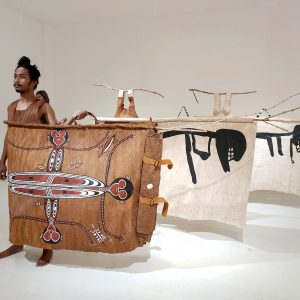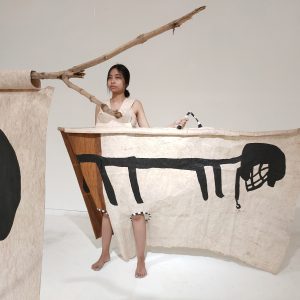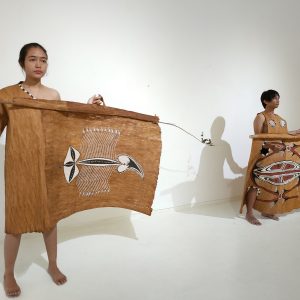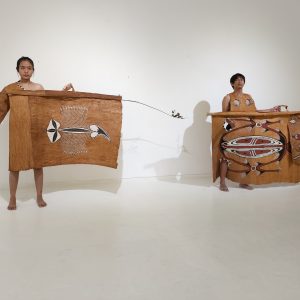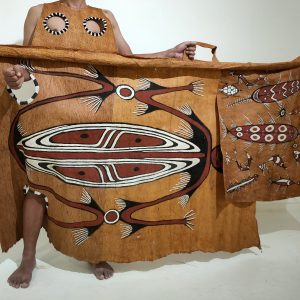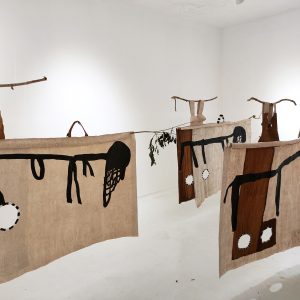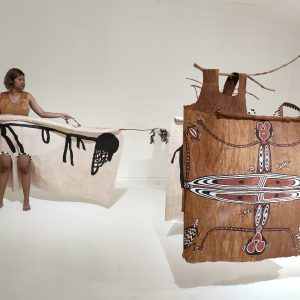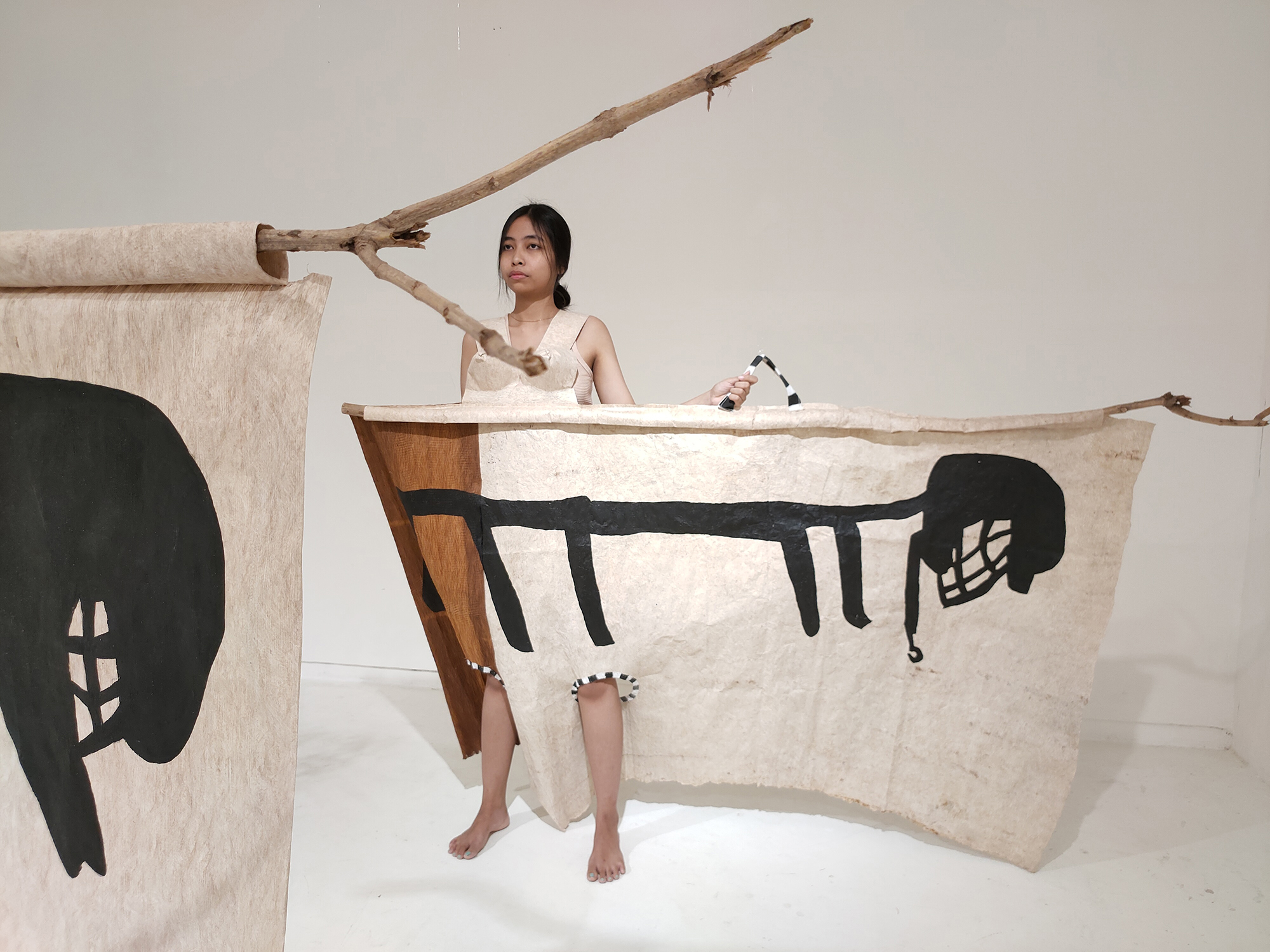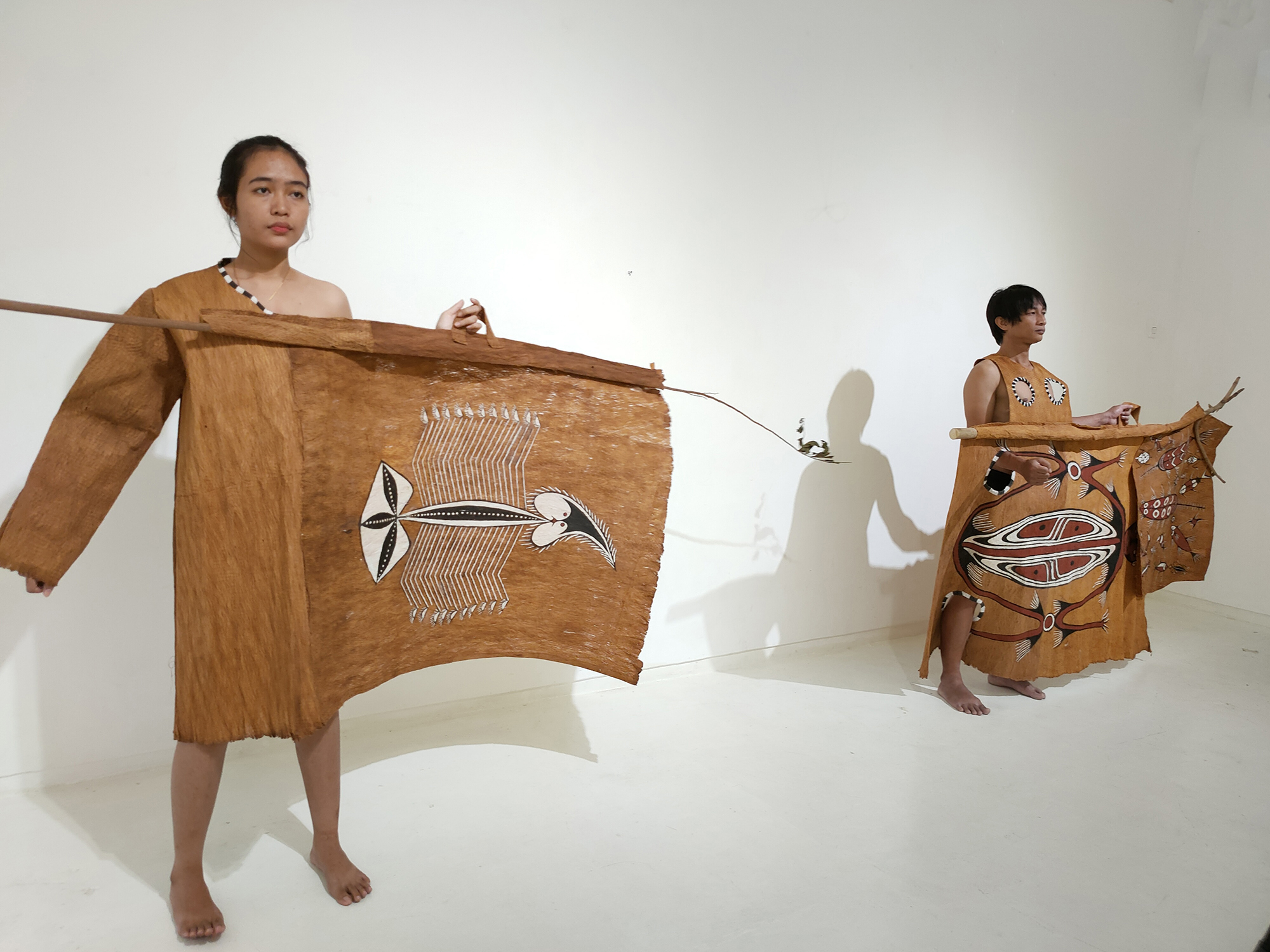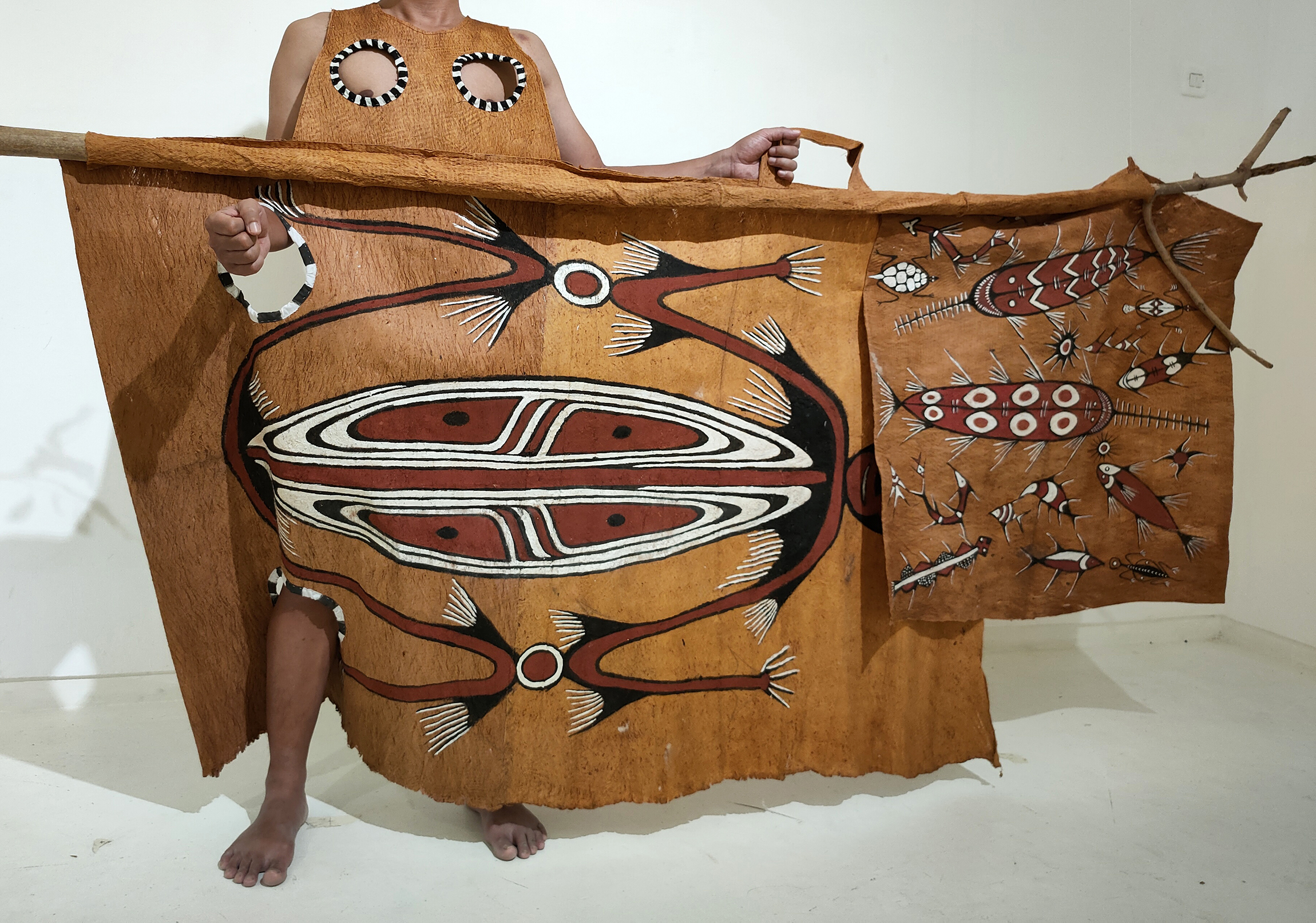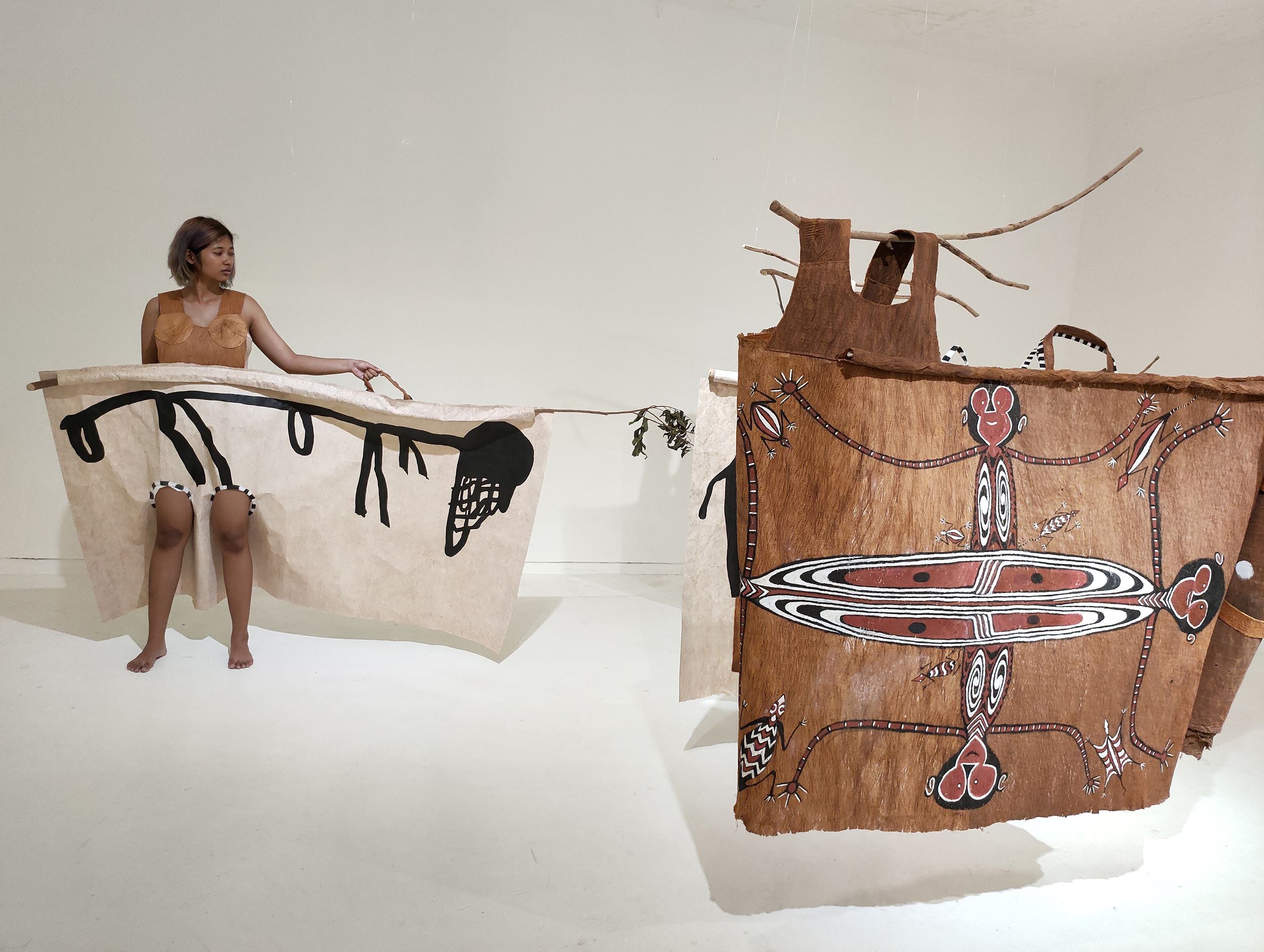In collaboration with Agus Ongge.
Clothing serves not only to cover one’s body and express personal identity, but is also connected to and a reflection of power and social structures, traditions, ethnicities, religions, ecology and geographical conditions. Several forms of repression under the pretext of modernity have largely eliminated local knowledge including that on processing and designing bark as a part of material culture.
Agus Ongge from Sentani, Papua is an artist and active practitioner of expressing Papuan identity. Agus Ongge collaborated with me in creating a wearable installation from barkcloth. In the past, around lake Sentani, the use of barkcloth was commonly used for body coverings like loin cloths, blankets and sarongs or skirts, but nowadays mainly used for paintings and touristic objects. This collaboration process included numerous conversations on the urgency of disappearing knowledge and the tension between contemporary art and tradition.
In this video documentary Agus Ongge tells the history of visual arts developments in Papua, and how they relate to colonialism/ the Sending, modernisms and policies under Indonesian governments.
